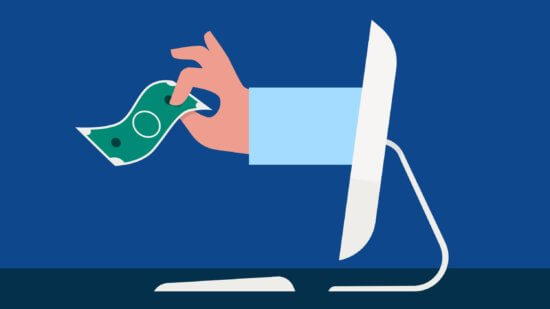Status Quo Meaning: How It Shapes Lawful Choices and Criteria
Status Quo Meaning: How It Shapes Lawful Choices and Criteria
Blog Article
Browsing the Characteristics of Status in Legal Solutions: An All Natural Method
In the world of legal systems, the concept of condition quo holds a significant role in shaping the structure upon which guidelines and regulations are built. By diving right into the intricate interplay of numerous factors influencing the legal standing quo, one can uncover nuanced insights that pave the method for educated decision-making and strategic planning.
The Significance of Condition Quo Evaluation
In legal proceedings, carrying out an extensive status evaluation is paramount to comprehending the present state of events and giving a foundation for informed decision-making. This analysis includes a detailed testimonial of existing problems, agreements, and scenarios that shape the context within which legal actions are being thought about. By examining the standing quo, lawful specialists can recognize key stakeholders, obligations and rights, prospective dangers, and chances for resolution.
Furthermore, delving into the condition quo helps with the identification of any gaps or disparities that may exist, shedding light on areas that require attention or explanation. This procedure aids in setting practical expectations and creating techniques that straighten with the prevailing scenarios. Understanding the status is critical for creating a roadmap that overviews lawful process in the direction of effective end results while reducing unintentional consequences.
Ultimately, a meticulous standing quo evaluation functions as a cornerstone for audio legal advice and critical preparation. It enables lawful professionals to navigate intricacies, expect challenges, and customize their method to attain positive results for their customers.
Elements Affecting Legal Status Quo
Considering the elaborate web of regulations, guidelines, and societal norms, what are the primary aspects that form and affect the lawful standing quo in contemporary lawful systems? Numerous key factors play critical roles in determining the legal condition quo within a lawful system. Furthermore, political characteristics and the balance of power within a legal system can greatly affect the lawful standing quo.
Methods for Status Quo Management
Efficient administration of the lawful status calls for a strategic strategy that recognizes the dynamic nature of legal systems and the diverse elements influencing them. One key technique for condition quo monitoring is routine surveillance and evaluation of legal growths. This includes staying updated on new laws, laws, and judicial choices that could impact the current legal landscape. By proactively checking these modifications, attorneys can anticipate possible difficulties and adjust their approaches as necessary.
Furthermore, efficient communication and partnership amongst stakeholders are necessary techniques for taking care of the status quo in lawful systems. By cultivating open dialogue and participation between policymakers, lawyers, and other pertinent parties, prospective problems can be dealt with proactively, and remedies can be developed collaboratively to preserve a secure lawful environment.
Difficulties in Status Adjustment

Additionally, the lack of clear standards for browsing status adjustments can create unpredictability and ambiguity. Attorneys typically find themselves in uncharted region when attempting to test existing standards or integrate brand-new legal frameworks. This can cause hesitancy and unwillingness to deviate from familiar techniques, further impeding the adjustment procedure.

Applying All Natural Techniques
Including an extensive viewpoint into legal approaches is necessary for addressing the diverse obstacles of contemporary lawful systems. Implementing holistic techniques entails a shift in the direction of viewing legal issues as interconnected parts of a bigger system as opposed to separated occurrences. This calls for a proactive position that thinks about not only the immediate legal implications yet additionally the more comprehensive societal, you can try this out economic, and moral effects of lawful choices.
One key element of executing all natural methods is promoting interdisciplinary cooperation within legal groups. By bringing with each other experts with diverse histories such as legislation, psychology, economics, and sociology, a more nuanced understanding of complicated lawful problems can be achieved. This collaborative technique makes it possible for legal experts to develop more efficient methods that make up a vast array of aspects affecting the end results of legal situations.
In addition, embracing innovation and data-driven insights is important in applying all natural techniques in legal systems. Leveraging devices like expert system for legal research, predictive analytics for instance outcomes, and information imp source visualization for presenting intricate information can improve decision-making procedures and improve overall legal end results. By incorporating these technical innovations right into legal technique, a much more reliable and holistic method to resolving lawful challenges can be achieved.
Final Thought
Finally, browsing the dynamics of status in lawful systems needs a detailed understanding of the significance of status analysis, the different factors affecting lawful status, efficient approaches for standing quo administration, and the challenges in standing quo adjustment. Executing holistic techniques is crucial for effectively taking care of and adjusting to the standing quo in lawful systems. It is critical for lawful experts to constantly adjust and examine to the changing characteristics of the status to ensure reliable and reliable lawful outcomes.
Thinking about the detailed web of legislations, laws, and social norms, what are the primary elements that shape and influence the legal condition quo in contemporary legal systems? A number of crucial factors play crucial functions in determining the lawful status quo within a lawful system. It is the interplay of these aspects that collectively shape and affect the lawful condition quo in contemporary lawful systems.
Effective management of the lawful condition quo requires a strategic approach that acknowledges the dynamic nature of lawful systems and the varied aspects influencing them.In conclusion, navigating the dynamics of standing quo in legal systems calls for a detailed YOURURL.com understanding of the significance of condition quo analysis, the numerous elements influencing legal condition quo, efficient approaches for standing quo administration, and the challenges in status quo adaptation.
Report this page